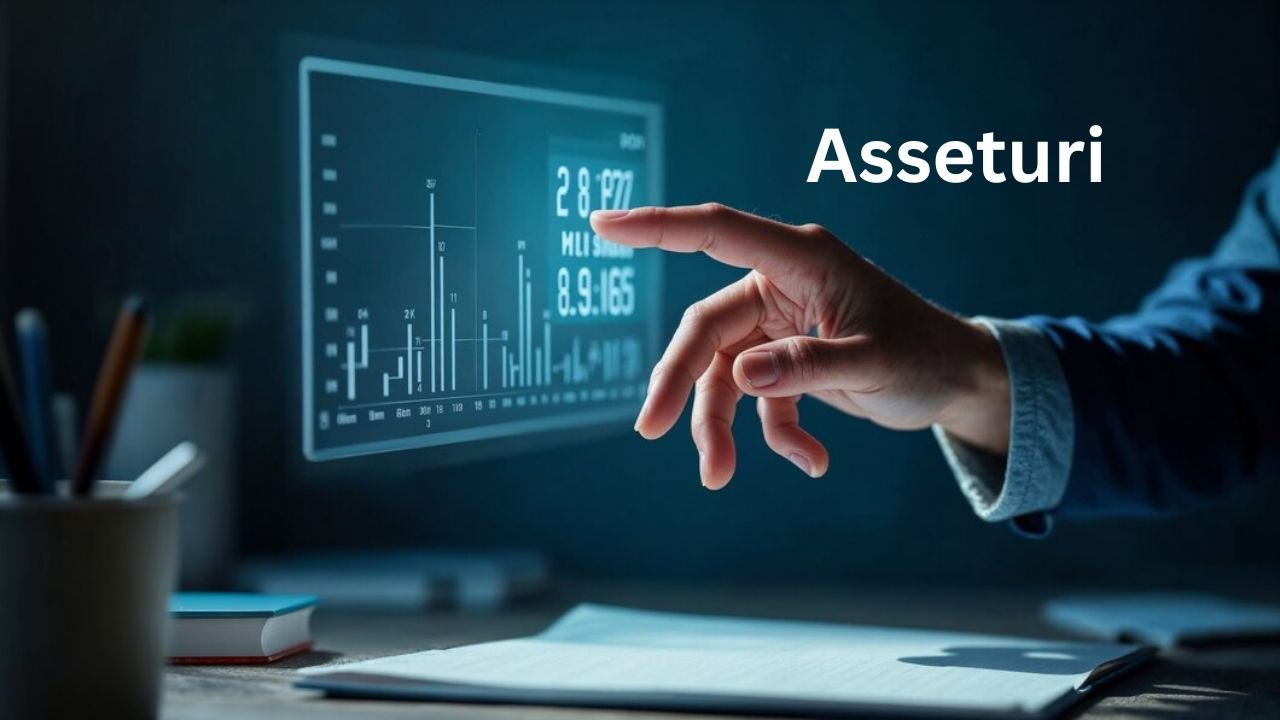The concept of asseturi, which is the Romanian word for “assets,” plays a crucial role in personal finance, business management, and investment strategies. In today’s fast-paced economy, where wealth-building and financial planning are priorities for individuals and businesses alike, understanding asseturi is paramount to achieving financial stability and success.
In this comprehensive guide, we will delve into the different types of asseturi, their significance in various industries, strategies for managing and growing them, and how asseturi can influence your long-term financial future. By the end of this article, you’ll have a clear understanding of how to effectively manage your asseturi to ensure maximum financial benefits.
Table of Contents
What Are Asseturi?
In financial terms, asseturi refers to anything of value that a person or company owns. These assets can be tangible or intangible and can range from cash, real estate, vehicles, and investments to intellectual property such as trademarks and patents. The value of asseturi plays a major role in determining an individual or organization’s net worth, serving as a key indicator of financial health.
Asseturi can be categorized based on their liquidity, risk levels, and time horizon. This classification aids in understanding their role within an investment portfolio and in determining the most appropriate strategies for asseturi management. The more one understands asseturi, the better they can optimize their use for wealth creation and financial growth.
Asseturi Categories
- Tangible Asseturi: These include physical objects that can be touched and seen, such as real estate, vehicles, furniture, machinery, and inventory. Tangible asseturi are often valued based on their current market price, and their worth may decrease over time due to depreciation.
- Intangible Asseturi: These are non-physical items that hold value, including patents, copyrights, trademarks, goodwill, and intellectual property. In many cases, intangible asseturi are more valuable than physical ones, particularly in technology-driven sectors.
- Liquid Asseturi: Assets such as cash, bank accounts, and investments that can be easily converted into cash are considered liquid asseturi. Liquidity is crucial for meeting short-term financial obligations and emergencies.
- Non-Liquid Asseturi: These assets cannot be quickly converted into cash without significant time or effort. Examples include real estate, long-term investments, and large business assets. While non-liquid asseturi may take longer to sell or use, they often represent a significant portion of overall wealth.
Understanding the Different Classes of Asseturi

The classification of asseturi extends further into various asset classes. Each class comes with its own set of characteristics, risks, and returns, making it essential for individuals and businesses to diversify their asseturi portfolio. Diversification reduces risk and ensures that no single asset class dominates or disrupts financial stability.
1. Real Estate Asseturi
Real estate is one of the most popular types of asseturi due to its potential for long-term appreciation. Whether it’s residential, commercial, or industrial property, real estate asseturi provide numerous financial advantages, such as rental income, capital gains, and tax benefits. In many cases, real estate asseturi serve as a hedge against inflation and market volatility.
Real estate asseturi are often viewed as “safe” investments because property values generally increase over time. For individual investors, owning a home or rental property is a common way to build wealth. Businesses often use real estate asseturi for operational purposes, and these properties can become significant contributors to a company’s balance sheet.
2. Equity Asseturi
Equity asseturi refer to ownership in a business or company. When you own shares of a company, you hold a percentage of equity, entitling you to dividends, voting rights, and a share of the company’s profits. Equity asseturi, such as stocks and shares, are often highly liquid, meaning they can be sold relatively quickly and converted into cash.
Equity asseturi can provide substantial returns, especially when the company performs well or if there is a strong demand for shares. However, equity asseturi are also prone to market volatility, meaning their value can rise and fall rapidly, making them riskier than other types of asseturi.
3. Fixed-Income Asseturi
Fixed-income asseturi, such as bonds, Treasury bills, and government securities, offer a predictable income stream over a specified period. These asseturi are often considered less risky than equities, making them attractive to conservative investors seeking steady returns. Investors typically purchase bonds with the expectation of receiving interest payments over time, with the principal being repaid at the bond’s maturity.
Although fixed-income asseturi may not offer high returns like equity asseturi, they provide stability and serve as a reliable income source, particularly during times of economic uncertainty.
4. Commodities Asseturi
Commodities, including gold, silver, oil, agricultural products, and metals, are considered valuable asseturi, especially in times of inflation or economic instability. These asseturi tend to retain or increase in value during economic downturns, providing investors with protection against market volatility. Commodities are a physical type of asseturi and are often used by investors to hedge against currency fluctuations and inflation.
The Importance of Asseturi Management
Asseturi management is the process of overseeing and optimizing the performance of your assets to ensure their long-term growth and profitability. Effective management allows individuals and businesses to minimize risks, maximize returns, and make informed decisions about when to acquire, sell, or leverage asseturi.
Key Benefits of Proper Asseturi Management
- Increased Wealth: By monitoring the performance of your asseturi, you can identify opportunities for growth and expansion, resulting in increased net worth over time.
- Risk Reduction: Good asseturi management involves balancing high-risk and low-risk asseturi, reducing the potential for significant financial loss.
- Improved Cash Flow: Monitoring liquid asseturi such as cash and investments ensures that you always have access to capital when needed, improving overall cash flow.
- Enhanced Financial Stability: Properly managing your asseturi helps you maintain financial stability, particularly during economic downturns or unforeseen circumstances. This provides peace of mind and a stronger foundation for future planning.
How to Manage and Grow Your Asseturi
Managing and growing your asseturi is essential to building long-term wealth and financial security. Whether you’re an individual looking to increase your personal assets or a business aiming to optimize company resources, these strategies can help you achieve your goals:
1. Diversification
A well-diversified asseturi portfolio reduces risk and increases the potential for steady growth. Diversification involves investing in different asset classes, such as real estate, stocks, bonds, and commodities, to protect against the volatility of any single market. By spreading your asseturi across multiple categories, you create a buffer against financial losses.
2. Regular Monitoring
Track the performance of your asseturi regularly. For businesses, this means conducting asset audits, evaluating the current value of tangible and intangible assets, and making necessary adjustments. For individuals, it may involve reviewing investment portfolios, real estate holdings, and savings to ensure they are performing as expected.
3. Invest in Appreciating Asseturi
Appreciating asseturi are those that increase in value over time. Real estate, stocks, and intellectual property are prime examples. Focus on acquiring asseturi that are likely to appreciate, whether through direct investment or reinvestment of profits from other asseturi. This strategy helps grow your overall wealth with minimal intervention.
4. Leverage Existing Asseturi
Leverage refers to using your existing asseturi as collateral to obtain loans or financing for further investments. For example, homeowners can take out a mortgage on their property to invest in additional real estate, while businesses can use intellectual property as collateral to fund new product development. This can significantly accelerate the growth of your asseturi portfolio.
5. Minimize Depreciation
Certain asseturi, such as vehicles, machinery, and equipment, lose value over time due to wear and tear or technological obsolescence. To minimize depreciation, ensure that these asseturi are well-maintained, upgraded when necessary, and replaced when their usefulness is diminished.
The Role of Asseturi in Wealth Building
Building wealth requires a long-term strategy for accumulating and managing asseturi. Wealth is not just about how much money you earn, but how well you manage and grow your asseturi over time. Whether you’re an individual or business owner, leveraging asseturi is key to increasing your financial power.
Asseturi in Digital and Technological Innovation
With the rise of digital technology, digital asseturi have emerged as an important component of modern financial planning. Cryptocurrencies, NFTs (non-fungible tokens), and digital platforms are examples of digital asseturi that can generate significant returns. However, they also come with high volatility and risk, making them a niche but potentially lucrative area of asseturi management.
Digital asseturi, while intangible, can grow quickly in value due to global demand and the rapid pace of technological innovation. Investors in this space must be prepared to handle the unpredictability of these asseturi and should ensure their portfolio is balanced with more stable asseturi classes.
FAQs About Asseturi
- What are the best asseturi to invest in? Real estate, stocks, bonds, and digital asseturi are all popular choices for investment. However, the “best” asseturi depend on your risk tolerance, financial goals, and time horizon.
- How do I calculate the value of my asseturi? The value of tangible asseturi can be determined based on current market prices, while intangible asseturi, such as intellectual property, may require professional valuation.
- What is the difference between tangible and intangible asseturi? Tangible asseturi are physical items, while intangible asseturi include non-physical items like patents and trademarks.
- Can asseturi lose value? Yes, certain asseturi such as vehicles and machinery can depreciate over time, while stocks and real estate can fluctuate in value based on market conditions.
- Why should I diversify my asseturi portfolio? Diversification helps reduce risk and ensures that financial losses in one area are balanced by gains in another, providing more stable long-term growth.
Conclusion
In conclusion, asseturi are the foundation of wealth and financial success, whether you’re managing personal finances or running a business. By understanding the different types of asseturi, how to manage them, and strategies for growth, you can optimize your financial future. From real estate and stocks to digital asseturi, every asset you acquire has the potential to contribute to your overall wealth when managed properly. Taking control of your asseturi is a critical step toward achieving financial independence and long-term stability.
As you continue your financial journey, remember that building and managing asseturi is an ongoing process. Stay informed, diversify your portfolio, and leverage the power of asseturi to create a prosperous future.
You can see latest news and updates at: Touchcric




